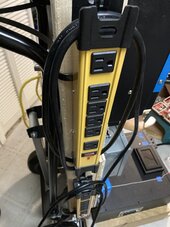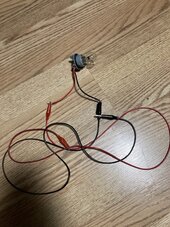Brucey
Solar Wizard
I think the UL listed ones have a taller wire box to give you more room. But then it's bigger overall and you are trying to be compact.



your inlet just a standard 15A
Sorry I meant the grid input to the mp2, on the other side with the extension cord?Yes. Each are ETL rated breakers on a 15 amp breaker in the panel. Redundancy in motion
could put it to work running a window air conditioner unit or resistance heater or something between real tasks.
Have you put that Beast on a scale ? I
little details" that can save one a lot of "pains". That really says a lot.
am curious what that whole kit weighs all said & done
HEAVY

Is there a page that shows the torque specs for the batteries?Well I had a chance to borrow my mechanics high end torque wrench. Sadly its lowest setting was above 6 nm. Considering the stories of snapped screws on battery cells I elected to use a torque screwdriver that has been recommended by others. It is not digital but has a fairly easy scale for adjustments. I really liked that it came with a 1/4 to socket adapter. This made tightening up the screws on the terminals much easier. I went shy of 6 nm. They are still quite snug and should be fine.
I believe the recommendation was 6 nm. Would double check on this if needed. I went shy as a precaution.Is there a page that shows the torque specs for the batteries?
Thanks!!I believe the recommendation was 6 nm. Would double check on this if needed. I went shy as a precaution.


